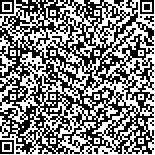| 引用本文: |
李欣春,梁昊,胡志希,胡思远,钟森杰,李琳,李杰,简维雄,郭志华.高血压心衰大鼠证候本质及药物干预研究[J].湖南中医药大学学报,2018,38(8):853-857[点击复制] |
|
| |
|
|
| 本文已被:浏览 2738次 下载 684次 |
| 高血压心衰大鼠证候本质及药物干预研究 |
| 李欣春,梁昊,胡志希,胡思远,钟森杰,李琳,李杰,简维雄,郭志华 |
| (湖南中医药大学中医诊断学国家重点学科, 湖南 长沙 410208;湖南中医药大学中医诊断学湖南省重点实验室, 湖南 长沙 410208;长沙金润中医院袁肇凯名师临床传承工作室, 湖南 长沙 410014) |
| 摘要: |
| 目的 研究参附注射液和参麦注射液对高血压心力衰竭大鼠的疗效差异,通过“以方测证”理论推测高血压心衰大鼠所属中医证型。方法 将60只Dahl盐敏感性大鼠分为对照组、模型组、参附组和参麦组,每组15只,对照组使用低盐饲料,其余三组使用8% NaCl高盐饲料喂养大鼠20周并予以相应干预,检测大鼠血清氨基末端脑钠肽前体(n-terminal pro-brain natriuretic peptide,NT-proBNP),彩色超声多普勒检测大鼠左室射血分数(left ventricular ejection fraction,LVEF)和左室短轴缩短率(left ventricular fractional shortening,LVFS)及观察HE染色心肌细胞。结果 与对照组比较,模型组LVEF和LVFS值均降低(P<0.05),NT-proBNP值升高(P<0.01);与模型组比较,参附组LVEF和LVFS值明显降低(P<0.05),NT-proBNP值升高(P<0.01);参麦组LVFS值升高(P<0.05),NT-proBNP值降低(P<0.01);与参附组比较,参麦组LVEF和LVFS值均升高(P<0.05)。结论 参麦注射液对高血压心衰大鼠的疗效显著,参附注射液对高血压心衰大鼠无效;高血压心衰大鼠模型不属于心阳虚证,最可能是心气阴虚证;LVEF值保留及血压升高可能是应用参附注射液的禁忌指标。 |
| 关键词: 高血压 心力衰竭 方证对应 大鼠动物模型 中医证型 |
| DOI:10.3969/j.issn.1674-070X.2018.08.003 |
| 投稿时间:2018-01-28 |
| 基金项目:国家自然科学基金项目(81373550,81503627,81774208);湖南省教育厅实验平台开放基金项目(2017K070);袁肇凯名师工作室项目。 |
|
| Study on the Essence of Syndrome and Drug Intervention in Rats with Hypertensive Heart Failure |
| LI Xinchun,LIANG Hao,HU Zhixi,HU Siyuan,ZHONG Senjie,LI Lin,LI Jie,JIAN Weixiong,GUO Zhihua |
| (State Key Subject of TCM Diagnostics, Hunan University of Chinese Medicine, Changsha, Hunan 410208, China;Provincial Key Laboratory of TCM Diagnostics, Hunan University of Chinese Medicine, Changsha, Hunan 410208, China;Clinical Inheritance Studio of Famous Doctor Yuan Zhaokai, Jin-Run Institute of Traditional Chinese Medicine, Changsha, Hunan 410014, China) |
| Abstract: |
| Objective To investigate the traditional Chinese medicine (TCM) syndrome types in rats with hypertensive heart failure based on the theory of "Syndrome Differentiation Through Formula" by investigating the clinical efficacy of Shenfu injection versus Shenmai injection in rats with hypertensive heart failure. Methods A total of 60 Dahl salt sensitive rats were equally and randomly divided into control group, model group, Shenfu injection group (Shenfu group), and Shenmai injection group (Shenmai group). The control group was fed with low-salt feed, while the other three groups were fed with high-salt (8% NaCl) feed for 20 weeks and given respective interventions. The serum level of N-terminal-pro-brain natriuretic peptide (NT-proBNP) was measured. The left ventricular ejection fraction (LVEF) and the left ventricular fractional shortening (LVFS) were determined by color Doppler ultrasound. And the myocardial cells with HE staining was observed under an electron microscope. Results Compared with the control group, the model group had significantly decreased LVEF and LVFS (P<0.05) and a significantly increased serum level of NT-proBNP (P<0.01). Compared with the model group, the Shenfu group had significantly decreased LVEF and LVFS (P<0.05) and a significantly increased serum level of NT-proBNP (P<0.01); the Shenmai group had a significantly increased LVFS (P<0.05) and a significantly decreased serum level of NT-proBNP (P<0.01). Compared with the Shenfu group, the Shenmai group had significantly increased LVEF and LVFS (P<0.05). Conclusion In rats with hypertensive heart failure, Shenmai injection has significant clinical efficacy, while Shenfu injection has no effect. The rat model of hypertensive heart failure is not identified as heart-Yang deficiency syndrome and is most likely to be heart-Qi and Yin deficiency syndrome. The preserved LVEF and increased blood pressure may be the contraindications for Shenfu injection. |
| Key words: hypertension heart failure syndrome differentiation through formula rat model traditional Chinese medicine syndrome type |
|

二维码(扫一下试试看!) |
|
|
|
|




